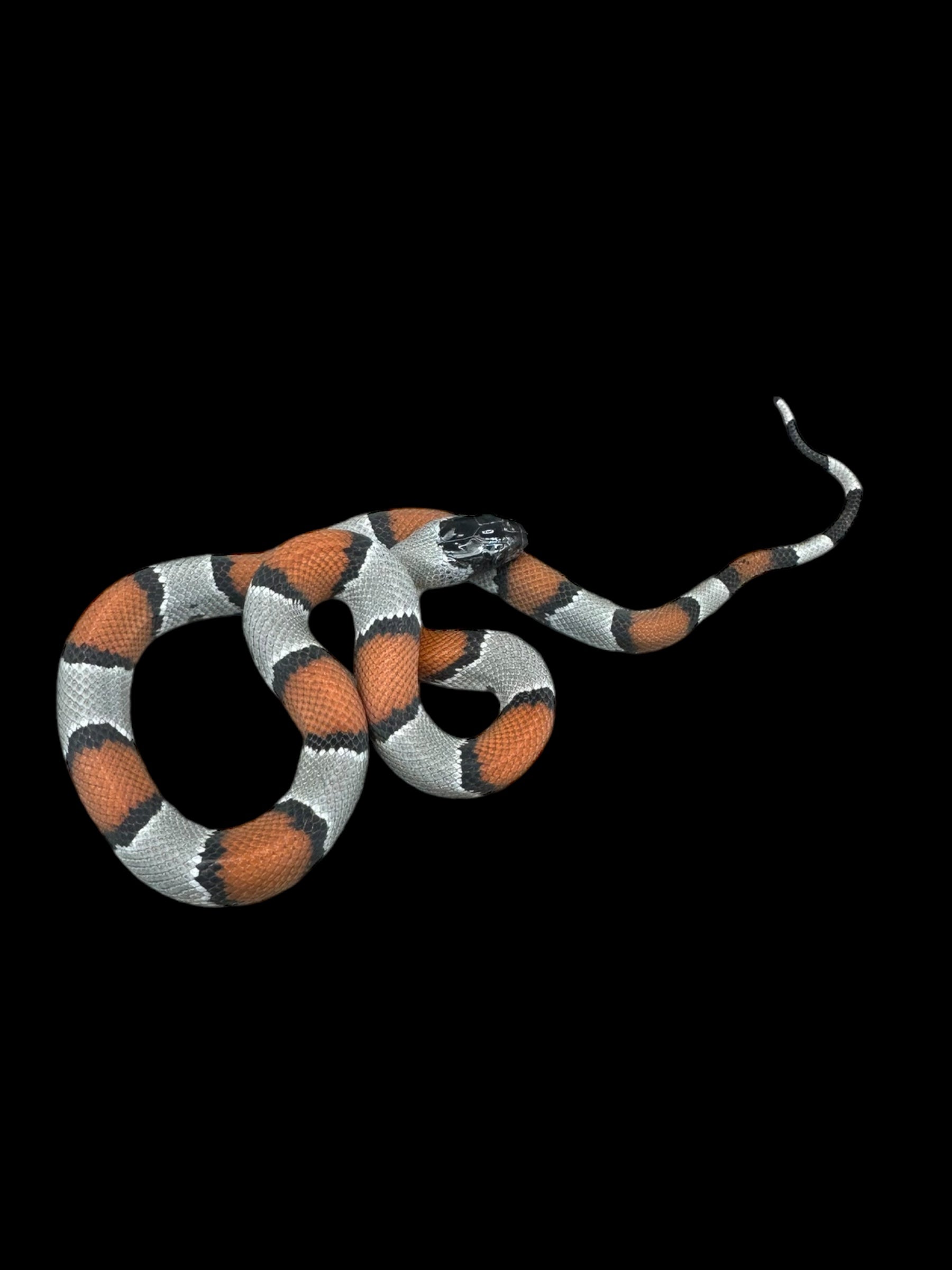Photo Disclaimer
Description
Grey-Banded Kingsnake
Scientific Name: Lampropeltis alterna
Common Name: Grey-Banded Kingsnake
Species Overview
Size: Adults typically reach 3–4 feet (0.9–1.2 m) in length, with a slender body and smooth, glossy scales.
Appearance: The Grey-Banded Kingsnake is one of North America’s most visually distinct colubrids, recognized by its soft grey background colour overlaid with alternating red-orange and black bands. Band thickness, spacing, and colour intensity vary widely between individuals and populations. Some snakes exhibit vivid red-orange saddles separated by narrow black borders, while others have muted tans and silvers with minimal banding. The base colour can range from pale stone grey to rich charcoal, and certain localities show unique pattern expressions, such as reduced banding or wide orange saddles. The head is typically dark with a pale snout, and the scales have a smooth, waxy sheen that enhances the subtle contrast of the pattern.
Distribution: Native to the Trans-Pecos region of western Texas, southern New Mexico, and northern Mexico.
Habitat: Grey-Banded Kingsnakes inhabit rocky desert slopes, limestone ridges, and arid scrublands where they shelter among crevices and talus at higher elevations. In captivity, this species thrives in naturalistic terrariums with soft substrate, rock ledges, and secure hiding areas.
Behaviour: This species is secretive and primarily nocturnal, spending much of the day hidden under rocks or in crevices. While shy by nature, they adapt well to handling once established and are known for their calm, deliberate movements. They are opportunistic feeders in the wild but thrive on consistent rodent diets in captivity.
Captive Care
Enclosure: Provide an enclosure at least 3 feet × 18 inches × 18 inches for adults. Include rocky hides, secure ledges, and varied terrain to simulate natural habitat. A dry, sandy or rocky substrate with localized humidity pockets works best.
Temperature & Humidity: Maintain a daytime gradient of 78–84°F (25–29°C) with a basking area near 88–90°F (31–32°C). Nighttime temperatures may drop to 68–72°F (20–22°C). Maintain moderate humidity between 30–45%, with a localized moist hide available for shedding.
Diet: Offer frozen-thawed rodents every 10–14 days. Grey-Banded Kingsnakes can be finicky feeders as juveniles, sometimes preferring lizard-scented prey, but typically transition to rodents with patience and consistency.
Behaviour in Captivity: Calm, deliberate, and non-aggressive, these snakes are rewarding captives for experienced keepers. They thrive in stable, quiet environments and are well-suited to display enclosures that mimic their natural rocky terrain.
Special Considerations: Grey-Banded Kingsnakes are best housed individually and should not be cohabited with other snakes. Hatchlings may require scenting or assist-feeding before readily accepting rodents.
Genetics Note
The Grey-Banded Kingsnake exhibits extensive natural variation across its range rather than a high number of man-made morphs. Distinct localities such as Blair’s Phase, Davis Mountain, Langtry, and Loma Alta forms are recognized, each with unique band thickness, colour tone, and saddle intensity. Selective breeding has also enhanced existing natural traits, resulting in colour variations like High Red, Wide Banded, Reduced Pattern, and Patternlesslines. True genetic morphs are rare in this species compared to other kingsnakes, but locality-based diversity remains one of its defining features.
Species Summary
The Grey-Banded Kingsnake (Lampropeltis alterna) is a highly prized desert-dwelling species celebrated for its unique colouration, docile temperament, and remarkable locality diversity. Its calm nature, moderate size, and naturally variable pattern make it both a rewarding display animal and a favourite among collectors who value naturally occurring beauty over man-made morphs.

